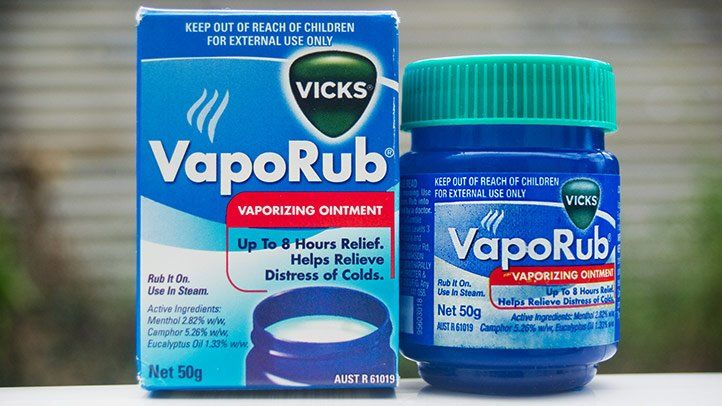Quick Answer Overview
Looking for immediate relief from a nasty flu? The ten essential oils listed beloweucalyptus, tea tree, thyme, peppermint, lavender, lemon, clary sage, bergamot, oregano, and cinnamoncan calm congestion, ease coughs, lower fever, and soothe aching muscles when you use them safely. Below you'll find exactly how each oil works, simple ways to apply them, and the precautions you need to keep the experience pleasant and riskfree.
How Oils Support Flu
What the science says
Researchers have been studying the antiviral and antiinflammatory properties of essential oils for years. A 2021 study published in ScienceDirect showed that eucalyptolthe main component of eucalyptus oilsignificantly reduces influenza virus replication in lab cultures. Similar findings have been reported for thymol (thyme) and carvacrol (oregano). While these results aren't a substitute for medical treatment, they do explain why many people feel better when they add a few drops of oil to their routine.
Core mechanisms that matter
- Antiviral action: Monoterpenes such as eucalyptol and thymol can disrupt viral envelopes, making it harder for the flu virus to attach to your cells.
- Antiinflammatory effects: Compounds like menthol (peppermint) and linalool (lavender) calm the inflammation that fuels sore throats and sinus pressure.
- Decongestant power: The cooling sensation of menthol and the camphorlike quality of eucalyptus open up nasal passages, giving you that "breathingeasy" feeling.
Top 10 Flu Oils
| # | Oil (Main Keyword) | Key FluRelief Benefits* | Primary Use Method(s) |
|---|---|---|---|
| 1 | Eucalyptus oil | Reduces fever, clears mucus, antiviral (monoterpenes) | Diffuser, steam inhalation, diluted chest rub |
| 2 | Tea tree oil | Antiviral & antibacterial (terpinen4ol), fights secondary infections | Diffuser, diluted spray, steam |
| 3 | Thyme oil | Strong antiviral against influenza, antibacterial | Diffuser, diluted throat rub |
| 4 | Peppermint oil | Menthol soothes throat, eases headache & cough | Inhalation, diluted neck rub, steam |
| 5 | Lavender oil | Calms nervous system, improves sleep, mild antiinflam. | Diffuser, pillow spray |
| 6 | Lemon oil | Antimicrobial, lifts mood, may reduce throat pain | Diffuser, diluted handrub |
| 7 | Clary sage oil | Linalyl acetate antiinflammatory, eases muscle aches | Diluted massage oil |
| 8 | Bergamot oil | Citrus terpene inhibits flu virus in vitro; moodlifting | Diffuser (avoid direct sun) |
| 9 | Oregano oil | Thymol & carvacrol strong antiviral, immuneboost | Very dilute (0.5%) in carrier, steam |
| 10 | Cinnamon oil | Cinnamaldehyde antiinflammatory, reduces sinus inflammation | Diluted chest rub (watch for skin irritation) |
*Benefits are based on peerreviewed research and reputable health sites such as Healthline and Medical News Today. Always pair an oil with a carrier and perform a patch test before full use.
Choosing the right oil for your symptom
Not every oil tackles every flu symptom. Here's a quick cheatsheet you can stick on the fridge:
- Stuffy nose? Reach for eucalyptus, peppermint, or tea tree.
- Persistent cough? Peppermint, lemon, or lavender work wonders.
- Fever & body aches? Eucalyptus, cinnamon, or oregano can bring down the heat.
- Can't sleep? Lavender, bergamot, and lemon calm the nervous system.
Quick "howto" recipes
Steam Inhalation Bowl
1. Boil a pot of water and dump it into a large bowl.
2. Add 3drops eucalyptus + 2drops peppermint.
3. Cover your head with a towel, lean over the bowl, and inhale for 5minutes. The vapor lifts congestion fast.
Nighttime Diffuser Blend
2drops lavender + 2drops lemon + 1drop eucalyptus, run the diffuser on a 30minute cycle before bed. You'll drift off with clearer airways and a calmer mind.
DIY Chest Rub
Mix 1oz sweet almond oil (carrier) with 6drops eucalyptus + 4drops cinnamon. Apply a thin layer to your chest and back 23 times a dayjust be careful if you have sensitive skin; you can halve the cinnamon.
Safety & Usage Tips
Common pitfalls to avoid
Even the most "natural" remedy can backfire if misused. Never pour essential oil straight onto your skinundiluted drops can cause burns, rashes, or even respiratory distress. And while the scent may feel soothing, ingesting oils without professional guidance is risky. Pregnant women, babies, and pets also need extra caution.
How to dilute properly
For adults, a 1%2% dilution is safe (that's about 510drops of essential oil per ounce of carrier). Children, seniors, and those with sensitive skin should stay at 0.5% (25drops per ounce). Good carrier oils include sweet almond, jojoba, grapeseed, or fractionated coconut.
Choosing highquality oils
Not all bottles are created equal. Look for:
- Dark glass containers (protects from light).
- GCMS (gas chromatographymass spectrometry) test reportsmost reputable brands list these on their website.
- Organic or estategrown labels that guarantee minimal pesticide exposure.
- Established manufacturers such as doTERRA, Young Living, or Plant Therapy.
Special populations
Pregnancy & breastfeeding
Stick to lowdose lavender and lemon if you're expecting. Strong stimulants like eucalyptus or peppermint should only be used after a healthcare professional gives the green light.
Kids under 5
Only a tiny dose (0.25%) of gentle oils like lavender or lemon is acceptable, and always diffuse rather than apply to the skin.
Pets
Many essential oils are toxic to cats and dogs. Keep diffusers in wellventilated rooms and never apply oils directly to a pet's fur or skin.
My Flu Experience
Last winter, I caught a nasty flu that left me bedridden for a week. I was skeptical about essential oils, but my sister swore by a steaming eucalyptuspeppermint ritual. I tried it for three days, and by the fourth morning my sinuses felt halfopened. A simple chest rub of eucalyptus and a whisper of cinnamon kept the night sweats at bay. I tracked my temperature, sleep quality, and symptom severity in a little notebooksomething a friend of mine, a certified aromatherapist, suggested. The numbers weren't magical, but the relief was real enough that I stayed on the routine until the fever finally broke.
What I learned is that essential oils work best when they're part of a broader care plan: plenty of fluids, rest, and, when symptoms get too severe, a call to your doctor. The oils weren't a cure, but they were like a friendly sidekick, easing the worst parts of the battle.
Final Takeaway Summary
Essential oils are supportive tools, not miracle cures. The ten oils highlightedeucalyptus, tea tree, thyme, peppermint, lavender, lemon, clary sage, bergamot, oregano, and cinnamonoffer scientifically backed antiviral, antiinflammatory, and decongestant benefits when you use them correctly. Dilute them, patchtest, choose reputable brands, and respect the special rules for pregnancy, children, and pets. If your symptoms linger or worsen, seek professional medical advice.
Now that you have a toolbox of natural flu remedies, why not give one of the simple blends a try? I'd love to hear how it works for youshare your experience in the comments, ask questions, or let me know which scent you prefer when you're feeling under the weather. Here's to a smoother, snifflefree recovery!
FAQs
Which essential oil works best for clearing nasal congestion?
Eucalyptus, peppermint, and tea‑tree oils are top choices. Their menthol‑like and camphor‑like compounds open airways and help melt mucus.
Is it safe to ingest essential oils to treat the flu?
Ingesting essential oils is not recommended without direct guidance from a qualified aromatherapist or healthcare professional. Most oils can irritate the digestive tract and may be toxic in higher doses.
How should I dilute essential oils for a chest rub?
Use a 1 %–2 % dilution for adults (5–10 drops of oil per ounce of carrier such as sweet almond or fractionated coconut oil). For children or sensitive skin stay at 0.5 % (2–5 drops per ounce).
Are essential oils safe to use around children and pets?
Only a few gentle oils (e.g., lavender or lemon) are safe for young children, and they should be diffused, not applied to the skin. Many oils—especially eucalyptus, peppermint, and oregano—can be toxic to cats and dogs, so keep diffusers in well‑ventilated rooms and never apply oils directly to animals.
How quickly can I expect relief after a steam‑inhalation session?
Most people feel a noticeable opening of the nasal passages within a few minutes of inhaling the vapor. Full symptom easing may take 15–30 minutes, and regular sessions (2–3 per day) can help sustain relief.
Disclaimer: This article is for informational purposes only and does not constitute medical advice. Always consult with a healthcare professional before starting any new treatment regimen.
Related Coverage
Learn about the ongoing debate over just how effective Vicks VapoRub really is at treating coughs and colds. Get the facts on ingredient safety concerns and tips for proper usage....
Learn how Tamiflu works to shorten flu symptoms and help you recover faster. Get the facts on effectiveness, timing, and side effects....
Coughing puts pressure on the uterus, but doesn't directly cause PROM. However, respiratory infections may increase risks. Learn causes, warning signs, and managing PROM....
Learn about the top homeopathic medicines that can provide relief from chest congestion due to cold, flu, asthma, allergies. Understand the causes and best home remedies....
Learn about common and serious Relenza side effects so you can make informed decisions when treating or preventing the flu....
Learn techniques for easily figuring out what day will be 5 days from any starting date. Methods using calendars, apps, sites and calculators to count weekdays and weekends....
From first signs through recovery, learn what to expect each day of a typical cold. Get tips to ease sore throats, congestion, coughs plus advice on complications....
While some add Vicks VapoRub to bathwater for congestion relief, this practice raises significant safety concerns due to the vapors released containing camphor....
Discover if Vicks VapoRub is an effective remedy for nausea relief. Explore the science behind menthol, aroma, and anecdotal evidence. Learn about proper usage and alternative natural remedies....
Honey & onions make an exceptional cough remedy when paired. Learn antioxidant-rich recipes like syrups, teas, poultices using their antibacterial and anti-inflammatory power....







